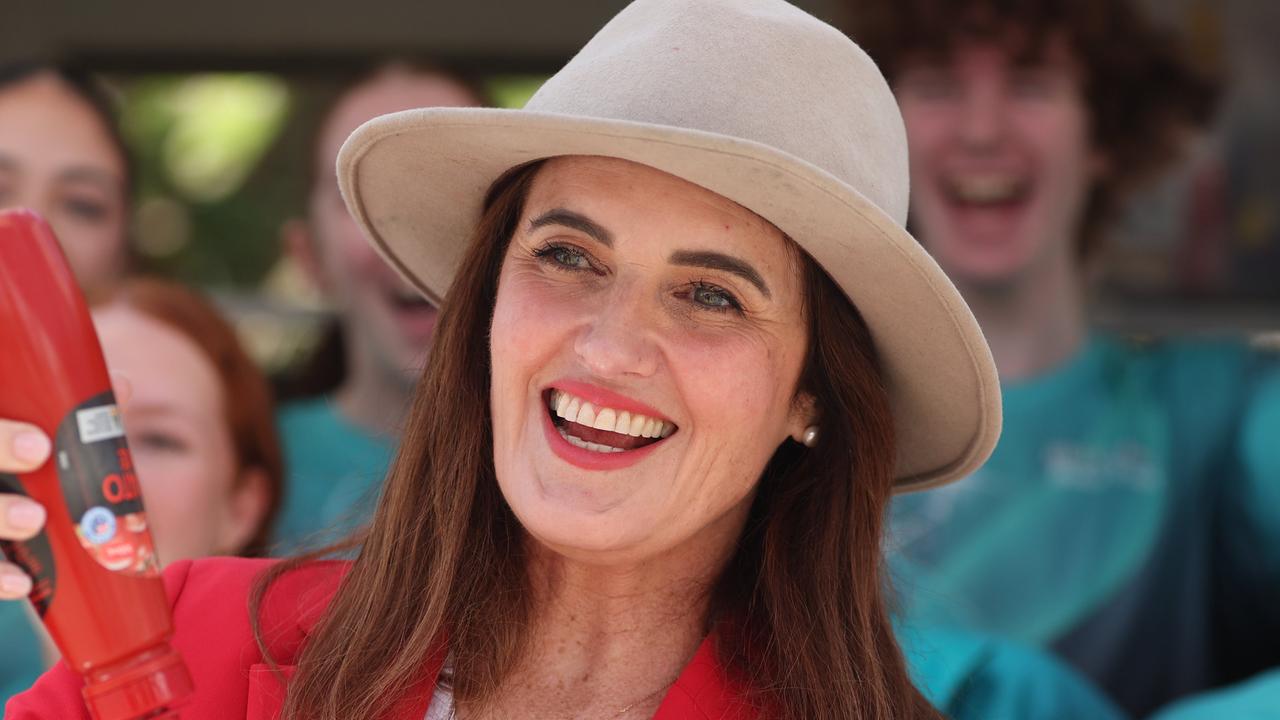Generational divide: Why younger voters are key to baby boomer PM’s future
Anthony Albanese’s hopes of political victory are on a knife-edge with the polls too close to call, but one group has emerged as a lock for the PM.
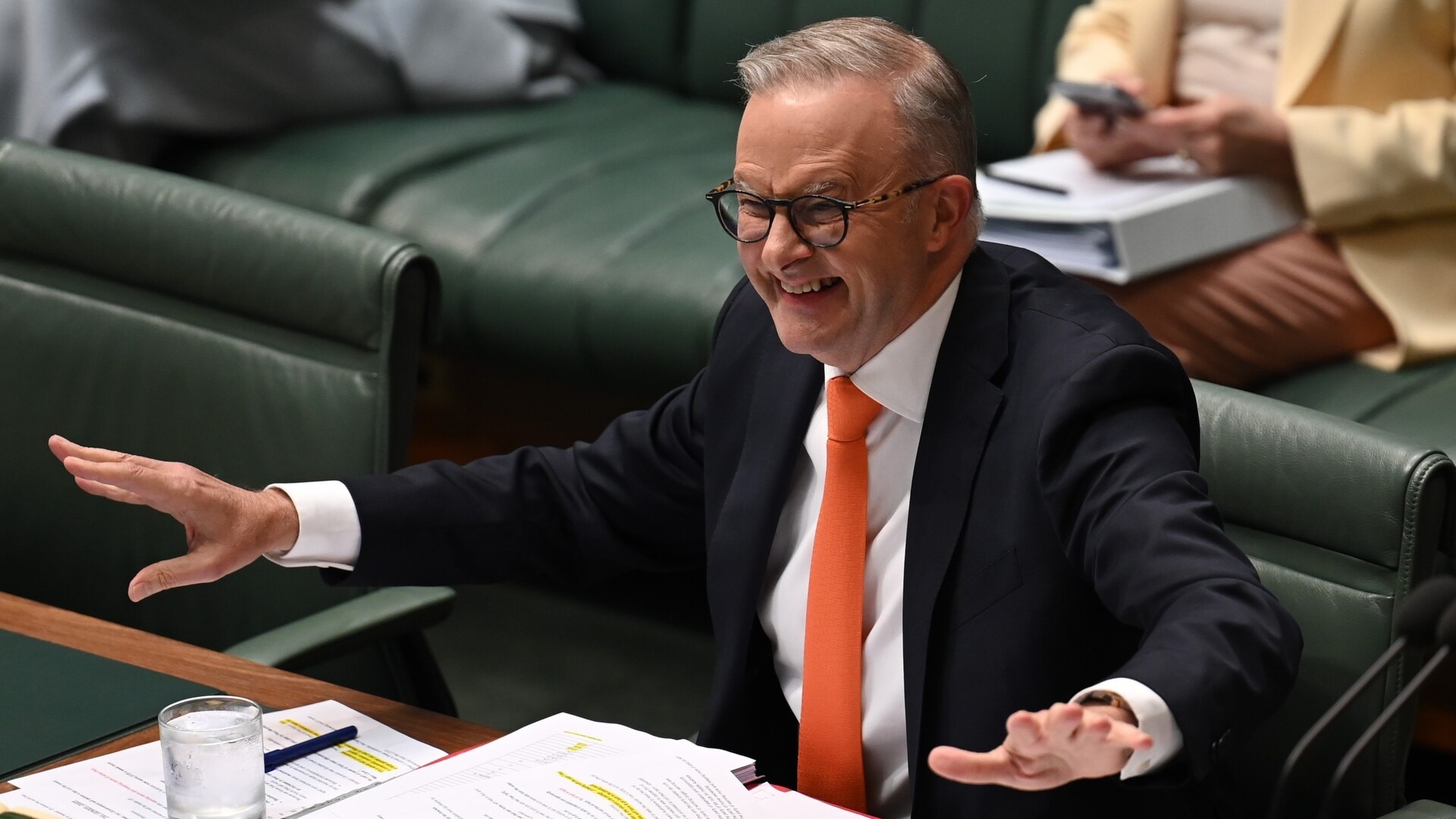
EXCLUSIVE
Baby boomer Anthony Albanese’s hopes of political victory are riding on a younger generation of voters including gen Zs, millennials and even generation Xers who are cancelling out the strong support for Peter Dutton among the golden oldies.
A new Redbridge poll published exclusively by news.com.au provides the clearest evidence yet of how important the under-40s vote is to the Prime Minister and his political comeback.
And it may even provide some insight into why the PM is embracing TikTok and influencers after he recently quipped the opposition leader was “delulu with no solulu”.
Despite finding that Mr Albanese starts the race with his nose in front of Mr Dutton with 51 to 49 per cent on a two-party-preferred basis, voters are divided in an intergenerational civil war over who is the best man to lead the country.
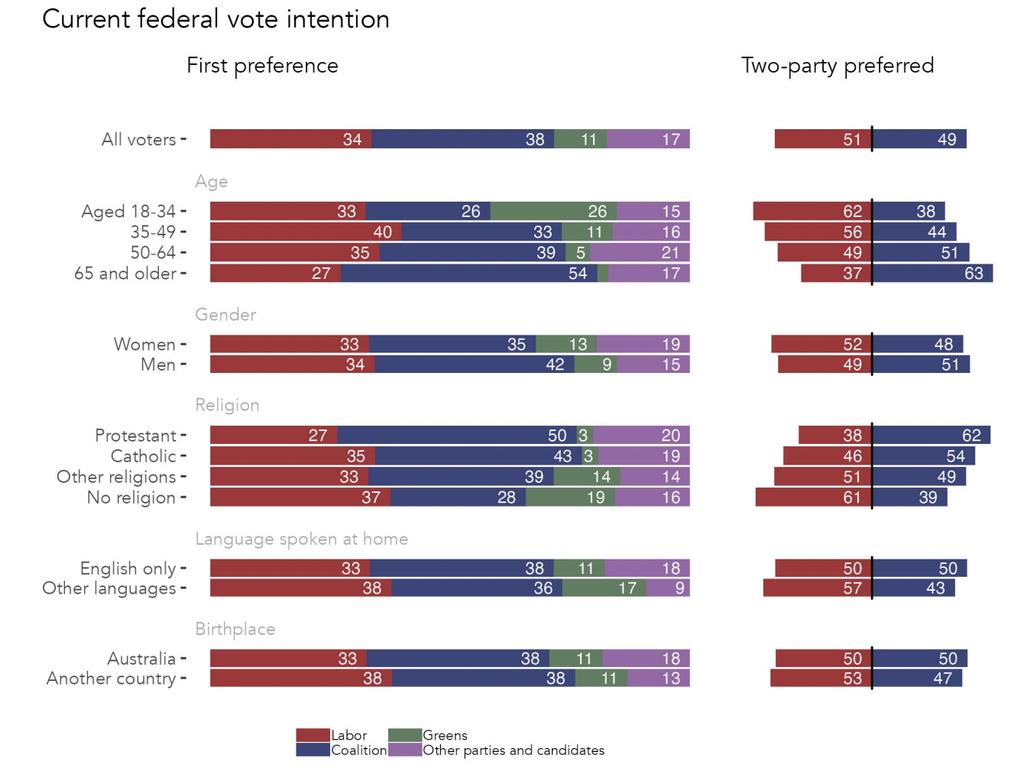
Although Mr Dutton is nearly 10 years younger than Mr Albanese, his support base is much stronger the older voters get with 63 per cent of over-65s backing him as the best choice as PM.
That result is completely flipped for younger voters where 62 per cent aged under 34 back Mr Albanese on a two-party-preferred basis.
Even among voters aged 35-49 there’s strong support for Labor with 56 per cent on a two-party-preferred basis.

Support for Labor, the Greens and independents is also stronger among female voters.
“There’s this really interesting pattern — young women are very left wing,” Redbridge pollster Shaun Ratcliff said.
“Much more likely than young men. But then older women aren’t that different from older men.”
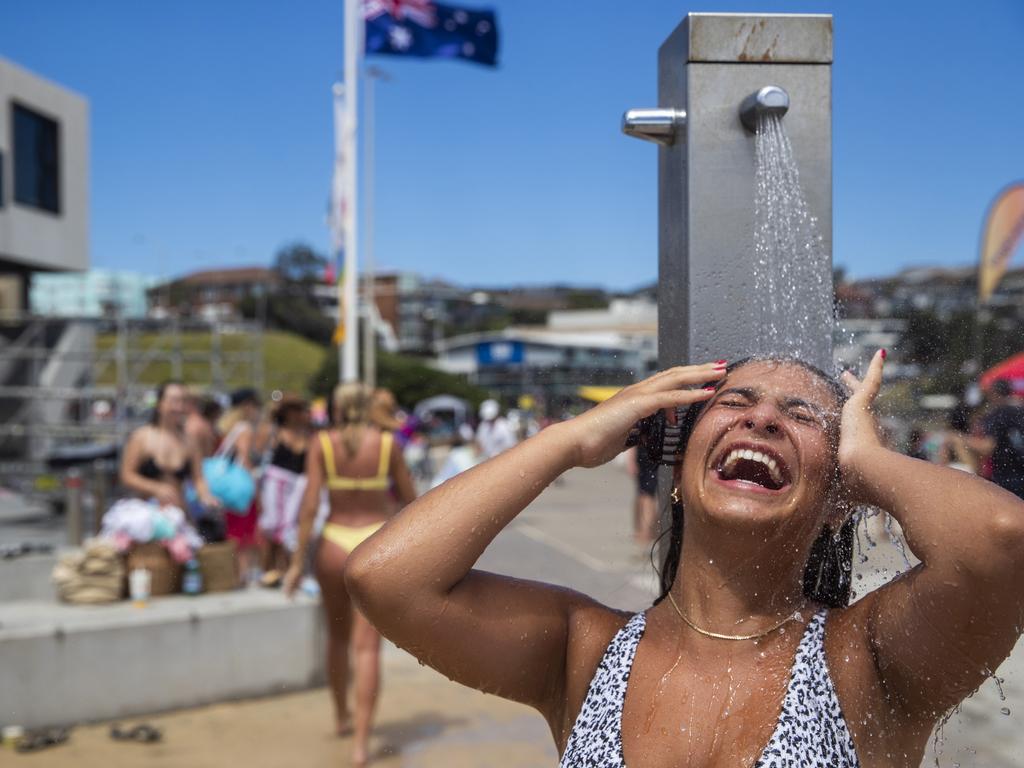
Among under-30s, support for Labor is a whopping 62 per cent on a two-party-preferred basis — the highest support level of any age group across the country.
There’s also huge support for the Greens among voters under the age of 34 with one in four — 26 per cent — backing the Greens with their primary vote.
Just 26 per cent of voters aged under 34 are backing the Liberals.
The strongest primary vote for the Labor Party is actually in the 35-49 age bracket where 40 per cent of voters back Labor. That translates to 56 per cent support on a two-party-preferred basis.
But support drifts away the older voters get.
For example, the Coalition’s strongest support is among voters aged over 65. Retirees backed Mr Dutton by the strongest margin — 54 per cent.
On a two-party-preferred basis when preferences are distributed, that translates as 63 per cent support for the Liberals among over-65s.
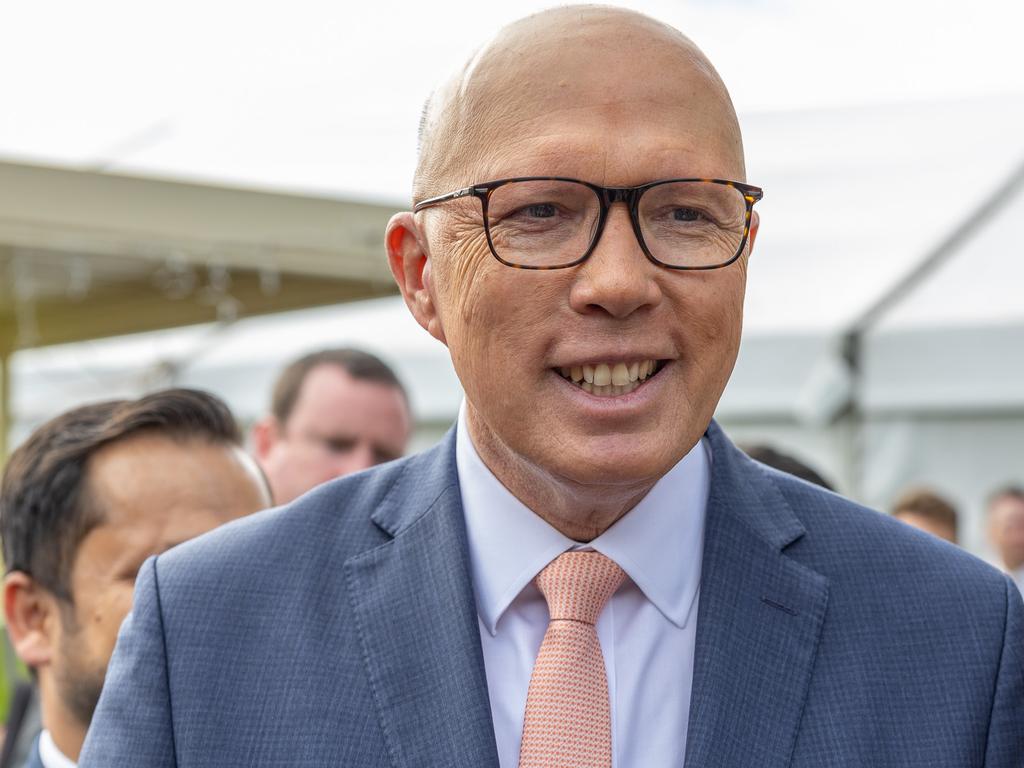
‘Wilful acts of bastardry’
The PM’s reliance on younger voters comes amid claims that a generation of political leaders are engaged in “wilful acts of bastardry” and creating intergenerational inequality.
Former Treasury Secretary Ken Henry has previously urged reforms to Australia’s tax system to bridge the growing divide.
“Young workers are being robbed by a tax system that relies increasingly upon fiscal drag,” he said.
“Fiscal drag forces them to pay higher and higher average tax rates, even if their real incomes are falling.”
Warning workers were being denied the “reasonable prospect of home ownership” and burdened by the “punishing costs of securing a tertiary education”, he repeatedly urged action.
“You simply can’t achieve something like that by accident,” he said. “Reckless indifference, perhaps. Wilful acts of bastardry, more likely. Accident, no.
“This is how a democracy works if those accorded the right to vote choose merely to look after themselves, with no codes, charters or transparency guarantees to protect the public interest.”
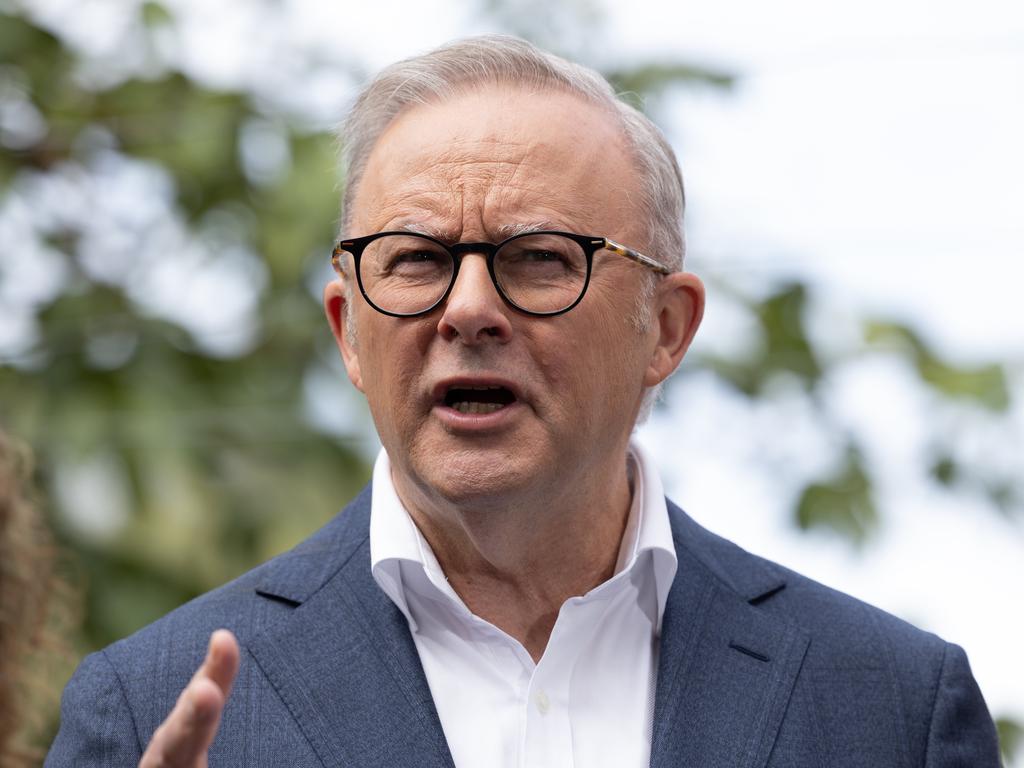
Gender breakdown
Women are also slightly more likely to back Labor but there’s not much in it across all age groups. The gap becomes larger however among younger female voters.
“Women used to be more conservative than men, so the gender divide has sort of flipped,” Mr Ratcliff said.
“It happened in the 1990s. There’s a lot of theories, but a likely factor is workforce participation. Education is another possibility.”
Support for Labor is also higher among migrants where other languages are spoken at home. Among English-only households support is split straight down the middle at 50:50.
However families that are bilingual are more likely to back the Albanese government with 57 per cent backing Labor.
Support for Labor is 52 per cent among women and 49 per cent among men.
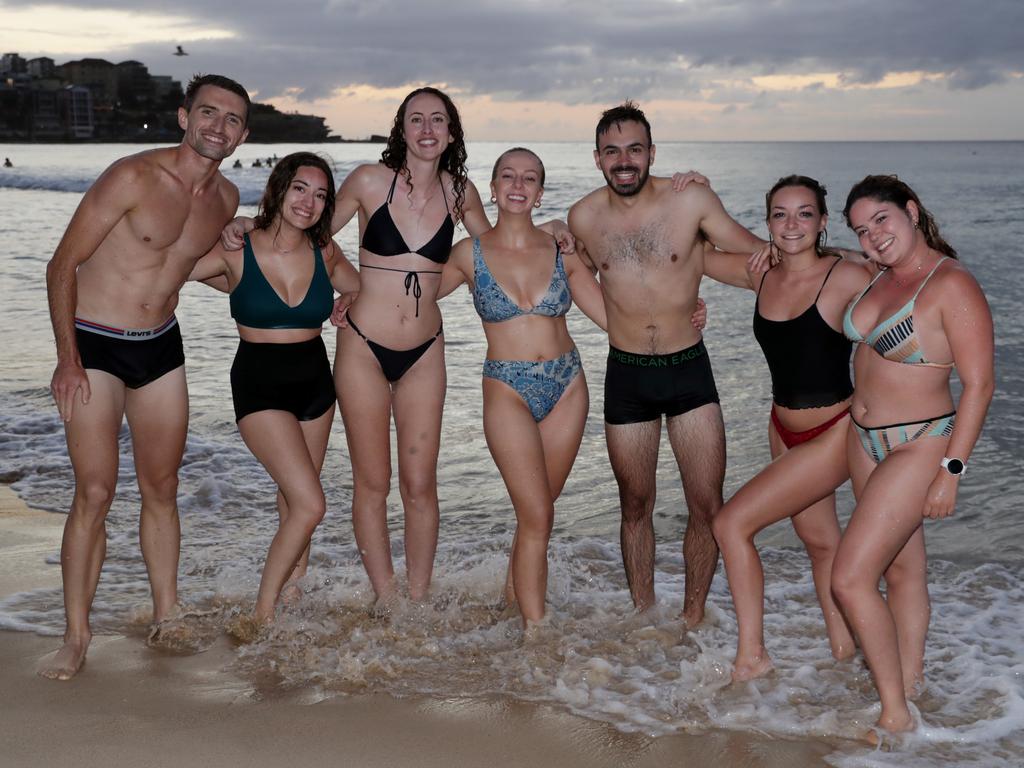
Voters declare they are worse off
Meanwhile, Australian voters have however declared they are worse off after three years of Mr Albanese’s leadership in the Redbridge poll.
Asked the question, “Has the Federal Government done anything to improve voters’ lives?”, the vast majority of voters answered in the negative.
Only 29 per cent of voters could name something that the federal government has done since Mr Albanese was elected that has “made their life better in any way”.
The majority of voters — 54 per cent — could not name a single measure that had improved their lives.
One in three voters could identify a positive.
Of those one in three, 36 per cent said the government’s $300 energy rebate was positive.
This outcome is clearly reflected in the ALP’s private polling and the decision of Treasurer Jim Chalmers to extend the rebate for six months offering another $150 rebate until the end of the year, one of the big cost-of-living measures in last week’s budget.
Read related topics:Anthony Albanese






